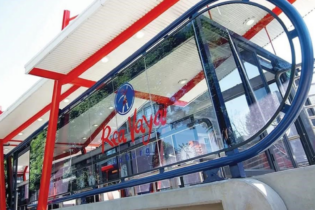How smart are truck operators for using smart trucks? Very smart, says Brian Hunt, MD of Timber Logistics Services, who explains to Simon Foulds why the company implemented the smart technology. Hunt also explains why participating in the road transport management system (RTMS) is an important key component in ensuring a viable transport operation.
RTMS is an industry-led, voluntary self-regulation scheme that encourages consignees, consignors and transport operators engaged in the road logistics value chain to implement a vehicle management system that preserves road infrastructure, improves road safety and increases the productivity of the logistics value chain. PLACE IN A BLOCK “Timber Logistics Services is a company providing transport and log handling services to the forestry industry. The company operates a fleet of 35 timber trucks (6 X 4 rigid trucks pulling either 4 axle trailers with an overall length of 22 m or 5 axle trailers with an overall length of 25.8 m). We also operate a fleet of 20 log handlers of varying size and capacity. Started some 20 years ago, the company commenced transport operations in 2001. In an average year, we transport about one million tonnes of logs, with the fleet covering about 7 500 000 km per annum. Monthly, we complete in excess of two thousand trips.” “Like most hauliers, we traditionally adopted a policy of viewing compliance as a necessary evil in the transport industry. We engaged the services of consultants to ensure that compliance kept us legal without impacting on our day-to-day operations – there was certainly no integration of compliance related factors into management or day-to-day operations. Pressure from customers and authorities led us to the decision to apply for RTMS accreditation.” Hunt says in 2008 the company was registered as an accredited transporter and also faced its first integrated NOSA audit, adding that these events proved to be a painful reality check for the company as it soon became apparent that treating compliance as an add-on and not as an integral part of its operation would not only lead to non-compliance but also fail to add any value to the business.” He adds states that a review of the company’s policies, procedures and systems soon showed that it had most pieces of the puzzle but that they had not been put together to give the complete and cohesive picture of the business. “Over the months that followed, we reassembled the jigsaw puzzle, found the missing pieces and then used the resulting picture to give us the overview that enabled us to move forward to integrate compliance into the day-to-day management and operation of our company,” he says. According to Hunt, RTMS provided Timber Logistics Services with a road map that could be used to channel energy in directions that resulted in improved operations, cost-effective savings and a general improvement in the management of the company. Key focus areas included:-- improved payload management
- improved safety and reduction in number and severity of accidents
- reduced operating costs
- improved uptime and increased revenue.
- 15 x 26 m smart truck timber combinations
- 12 x 22 m timber rigs
- 1 x 6 x 6 rigid and tag trailer
- 1 x truck tractor with timber tri axle trailer
Safety and accidents
Hunt states that any haulier is only too aware of the impact of accidents on its fleet, so the company has integrated safety programmes into its operations, with startling results. “In 2008 accidents were recorded at 6.1 per 1 000 000 km but by focusing on the causes we have been able to reduce this to 2.6.” “It was noted in 2008 that one third of accidents were attributable to driver fatigue, with a further one third caused by third parties. Obviously, these would be the focus of our attention. We found that the major causes of driver fatigue were extended shift hours and incorrect nourishment. The first proved relatively easy to remedy but the second cause provided something of a challenge. We eventually found that the introduction of a subsidized canteen providing balanced nutritional meals contributed significantly to fatigue alleviation.” Hunt explains that accidents caused by third parties are now the single largest contributor to the company’s accident statistics, rising from 35 to 65% of all accidents. He adds that defensive driving training is now an important module in Timber Logistics Services’ training programme, which has no doubt helped curb this to some extent. Accidents from this cause have dropped from 2.1 per 1 000 000 km to 1.7. “Apart from reduced downtime, substantial savings in the cost of accidents were achieved. In 2008, our cost of accidents was R0.51/km. This has been reduced to R0.21 in the current year, which, adjusted for inflation, reflects a savings of over 60%.” “As a consequence of the increased focus on safety and integration of safety into operations, we have achieved five star NOSA ratings over the last four audits. We recorded over two million lost time injury free hours since our last disabling injury, which occurred in May 2009.” Driver training &monitoring- drivers must pass a stringent medical examination
- training modules have been developed to focus on the following key areas:
- defensive driving
- health and nutrition
- fatigue
- confined space operations
- economical driving
- payload management
- basic daily truck and trailer maintenance
- driver performance is analysed weekly using the Mix Telematics system, and corrective action taken as necessary.








